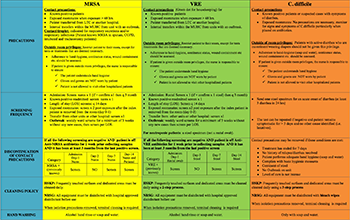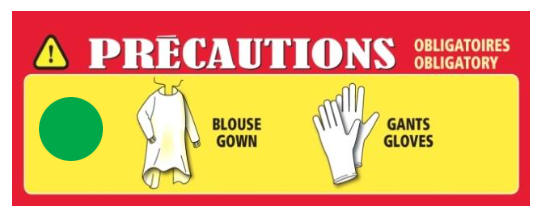Infection Control
Infection control is everybody’s business!! The goal of infection prevention and control practices is to minimize the spread of infectious diseases. This means reducing the risk of infection to you, your family as well as to our patients.
Here is a brief overview of the hospital infections you will most often encounter.
- VIRAL GASTROENTERITIS
- TUBERCULOSIS
- N95 - Please make sure you are aware of your N95 mask size.
(see also: 5 Surprising Facts About Hand Washing and The Facts About Hand Washing and Hand Hygiene)
Hand Hygiene
An important part of infection control is HAND WASHING! It is necessary to wash your hands properly and frequently to prevent the spread of infection, especially since you will be seeing multiple patients.
- Keep your natural nails short!
- No nail polish, long nails, artificial nails and hand jewelry!
- Your hand hygiene at the “Point of Care” will be regularly assessed. Feedback is given to health care professionals, and managers
Here is what you may not know about hand washing:
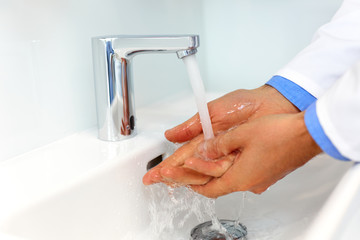 80% of all infectious diseases are transmitted by touch
80% of all infectious diseases are transmitted by touch
- Doubling your hand washing time can lead to a 10x reduction in skin bacteria
- Hot or cold? It doesn’t matter!
- Hand washing is the best way to reduce diarrhea-related deaths
- The first man to promote the benefits of hand washing was not believed by his peers – and died in a mental hospital
- The most critical times for hand washing are before preparing food and after going to the bathroom
- Most bacteria on our hands is on the fingertips and under the nails
- Damp hands are 1,000x more likely to spread bacteria than dry hands
- Hand washing and hand hygiene initiatives greatly reduce the number of absences, sick leaves, and lost productivity
- Keep your hands clean – Save a life!

Complete the tutorial linked below to get your hand washing certificate that should be presented to the clinical coordinator/educator at your site. The tutorial will take approximately 15 minutes to complete. On the home page, you will be asked for your name as well as other information about our organization "centre universitaire de sante de McGill" (see diagram).
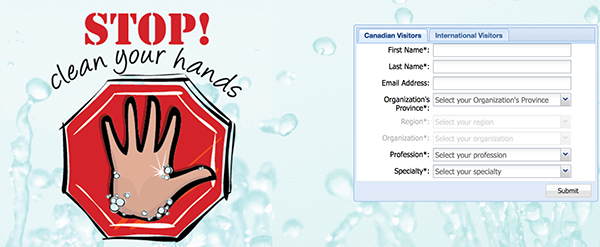
Every health care worker is responsible for cleaning:
- equipment used on a patient (e.g. Stethoscope, Bladder scanner, ECG machine)
- personal equipment used in the hospital (cell phones, pagers, spectra links) Other frequently touched items are assigned to either Nursing or Housekeeping and must be cleaned daily (e.g. bedrails, bedside tables, portable blood pressure)
Isolation Precautions
Patients will often need to be isolated for their infection. There are hospital protocols to follow for different infections depending on how they are transmitted and how contagious they are. There is signage above the door of the patient’s room. Here is an example of signs that you may see: (click to see the pdf file)
Here is a summary of the infection control protocol for MRSA/VRE/C.DIFF. Click on the image to view the pdf.
 Let’s Review!
Let’s Review!
This is a sign for a patient who tested positive for VRE (Vancomycin-Resistant Enterococcus).
When entering the room, all staff and visitors must:
- Put on a yellow gown found outside the door
- Put on gloves
* Remember to wash your hands before entering a patient’s room*
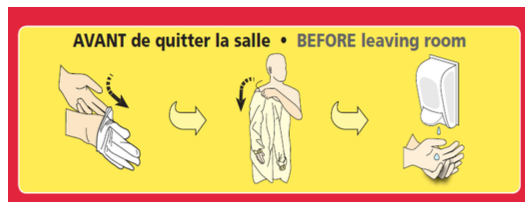 Before leaving the room, all staff and visitors must:
Before leaving the room, all staff and visitors must:
- Remove gloves
- Wash your hands
- Remove gown
- Wash hands again
* The use of alcohol hand sanitizer is sufficient, however it is suggested to use soap and water for C.diff isolation *
Reminder: Proper Glove Usage
ONLY wear gloves...
- when you expect contact with blood or bodily secretions at the point of care
- for care of patients on additional precaution (e.g. contact precautions)
- when carrying bedpans to the macerator
DO NOT wear gloves...
- or gowns outside of a patient/isolation room (applies to staff and patients)
- to push carts, trays, containers or equipment in the corridors of the hospital, neither for pushing patient on isolation
Dress Code
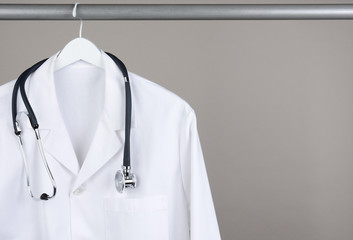 At the MUHC, everyone is asked to dress in a fashion that is professional, reassuring and respectful. Attire must not present any potential health and safety risk to the patients, families or staff.
At the MUHC, everyone is asked to dress in a fashion that is professional, reassuring and respectful. Attire must not present any potential health and safety risk to the patients, families or staff.
Clothing must be neat, clean and presentable at all times.
Examples of inappropriate dress include but are not limited to:
- sweat pants or shirts
- low hanging pants
- leggings
- shorts
- halter/sleeveless tops
- revealing clothing, etc.
![]() Hemlines of dresses, skirts and shorts should fall around the knee. If you wear a lab coat, it must be kept clean and it should be removed before leaving the hospital premises.
Hemlines of dresses, skirts and shorts should fall around the knee. If you wear a lab coat, it must be kept clean and it should be removed before leaving the hospital premises.
![]() Closed shoes must be worn in patient care areas at all times.
Closed shoes must be worn in patient care areas at all times.
![]() Hair, including facial hair, must be clean and neatly groomed. Long hair must be tied back during patient care.
Hair, including facial hair, must be clean and neatly groomed. Long hair must be tied back during patient care.
![]() Jewelry could be hazardous to patients and should not be worn when providing patient care. All dangling jewelry (ex: earring, watches, etc.) should also not be worn when providing patient care.
Jewelry could be hazardous to patients and should not be worn when providing patient care. All dangling jewelry (ex: earring, watches, etc.) should also not be worn when providing patient care.
![]() Scents from perfume and cologne can cause nausea or provoke symptoms in some individuals and are therefore not recommended.
Scents from perfume and cologne can cause nausea or provoke symptoms in some individuals and are therefore not recommended.
![]() An MUHC identification card must be worn at all times with the name clearly displayed. Therefore, you should wear your ID badge at all times.
An MUHC identification card must be worn at all times with the name clearly displayed. Therefore, you should wear your ID badge at all times.

Smoking/Vaping Policy
All MUHC campuses are smoke/vape free. No smoking or vaping is permitted anywhere on hospital grounds.

Feeling sick? What to do!
INFECTIOUS RISKS
The MUHC equally has obligations to patient safety. Hence, work restrictions may apply when health care workers have infections that may be transmissible to patients.
Consequently when you have fever, cough, nausea, vomiting, diarrhea, viral conjunctivitis, or rashes, in addition to calling in sick, you must call OH&S for an evaluation of your symptoms and the recommendations of work restrictions, if applicable.
In all cases, contact the Occupational Health and Safety nurse:
- LACHINE extension 71458
- MCH extension 22032
- MGH extension 44351
- MCI/MNH/RVH extension 34053
In addition, please advise your supervisor of your illness. Do not forget to let the academic coordinator of clinical education at your university know of any absences.

Patient Safety
The Basics
Patient safety is complex. To completely focus on what is best for your patient, make sure you adopt the following principles:
- Answer your patients' questions within your scope of practice
- Direct patients to the right professionals and resources
- Effectively respond to a patient safety incident
- Communicate issues and concerns with the multidisciplinary team
- Solve patient safety issues as able
Incident Reporting
Any incident/accident can and may occur in the workplace. It is important that you report it to your supervisor in order to debrief. The purpose of this discussion is to prevent then event from reoccurring as a part of your learning journey and not as a way to blame anyone. A form may need to be completed.
All incidents/accidents, which may adversely affect the institution’s capacity to render effective service and quality of care, should be reported and may include the following types of incidents/accidents:
- Falls
- Equipment failure (i.e. non-functioning oximeter)
- Suicide attempts
- Missing patients
- Thefts
- Floods
Please watch this powerful video. It will teach you what factors may contribute to avoidable patient harm and how patient partnership is crucial for the safety of our patients.
It is hoped that this story will inspire you to take up the cause of patient safety in your daily work at the MUHC.










